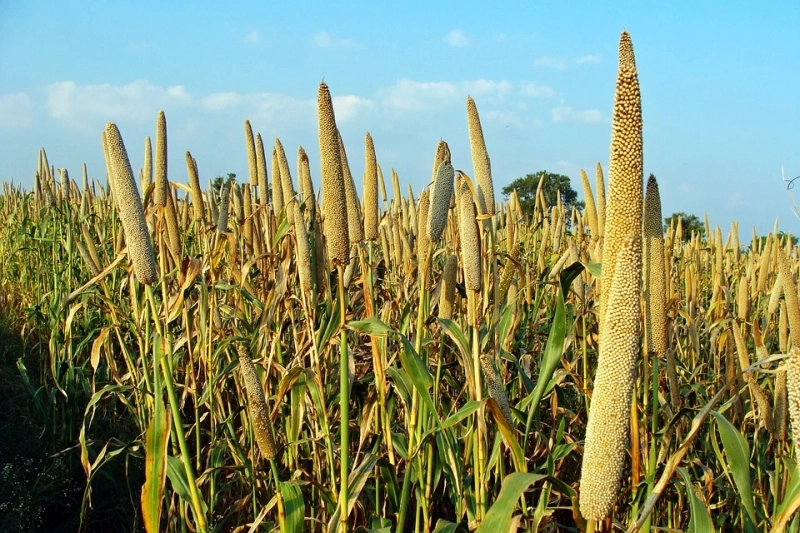Ever wonder why your grandmother looks forever young and doesn’t have as many health issues? The secret to their health is simple and easy to follow. Millets! Yes, you heard it right, the secret is a bunch of simple cereal grains called millets. They are naturally gluten-free, protein-rich, and have high fiber content. Millet grains might have fallen out of popularity, but their nutritional value and benefits are no less than they were yesterday. They are still the mighty and rejuvenating super-grains. Wanting to know more?
This article will be the ultimate source of information for your quest to learn everything necessary about millet grains.
Types of Millet Grain
Contrary to the popular belief that millet is a single variety of grain, there are, in fact, over 500 types of millets.
Millets are primarily divided into major and minor millets.
Major millets include pearl, foxtail, porso (white), and finger (ragi). Minor millets include Kodo, Barnyard, Little, Guinea, Browntop, and Fonio. Some of the popular millet varieties grown in India are discussed here:
Barnyard Millet (sanwa/kuthiravali/shamul)
These form an integral part of the tribal and rural diet in states like Uttarakhand. They contain a high amount of iron (more than wheat and brown rice) and have high protein content.
Finger Millet (ragi/kezhvaragu/nachni)
It’s popular in Karnataka’s diet and contains more calcium than milk. It’s full of phosphorous and therefore helps with digestion, bone, and dental health.
Foxtail Millet (kangni/thinai/kang)One of the oldest cultivated crops of the world, foxtail millet is rich in dietary fiber, protein and is low in fat. It controls insulin and cholesterol levels in the body.
Kodo Millet (kodon/varagu/kodra)Cultivated by the tribal communities in the drier Himalayan region, Kodo Millet is a rich source of Vitamin B. Thus, it helps keeps the heart and the nervous system healthy.
Little Millet (moraiyo/samai/sava)Grown in small farm holdings around South and Central India, Little Millet is full of protein and dietary fibers. Its natural antioxidant levels help prevent cancer.
Pearl Millet (bajra/kambu/bajri)Grown primarily in Gujarat and Karnataka, Pearl Millet contains high levels of protein, magnesium, and folic acid content. It’s helpful in controlling anxiety, insomnia, and migraines,
Porso Millet (chena/panivaragu/variga)Among millets, it has the highest protein value and plays a great role in the maintenance of muscles, blood, and cartilage.
Sorghum (jowar/cholam/jowari)It improves the level of calcium, iron, and focal acid. Its high dietary fiber helps in slow digestion, thereby controlling Type II Diabetes.
The nutritional content of millet
One cup of millet contains nearly:
· 2.26 grams of fiber
· 108 milligrams of potassium
· 6.11 grams of protein
· 76.6 milligrams of magnesium
Decline and revival of the Millet Era
For five years, starting from the middle of the 20th Century, there was a rapid decline in the demand and consumption of millets in India. Grains like Jowar, Bajra, and Ragi, showed a significant disappearance from our diet. This was due to the following factors:
The Green Revolution focussed primarily on wheat, rice, and sugarcane. High-yielding varieties of these crops were available which was advantageous to farmers
There was a lack of research and development in improving product quality or developing HYV seeds for millets.
According to Koushik Seetharaman, an Indian food scientist, “As the Indian middle class grows, tastes are changing. Millet is increasingly considered a ‘lower-class’ food”. And the use of millets as fodder for animals and birds, only adds to the perception.
Millets, however, did re-emerge as a primary cereal, and the focus on it has considerably increased in recent years. This is due to the following facts:
An increase in cases of malnourishment due to lack of food, or health-related issues due to insufficient nutrition value in other cereals led to the rediscovery of millets.Millets can survive harsh climatic conditions. They are grown in dry weather and require less rainfall.Lack of financing for agriculture resulted in bringing millets back, given the fact that they are less expensive to cultivate.Ever-growing awareness about millet’s nutritional and agricultural benefits propelled consumers towards the consumption of millets.Millet benefits
Rich in antioxidants - Phenolic compounds, like ferulic acid and catechins present in millet act as antioxidants that protect our body from harmful oxidative stress. Helps control blood sugar level - Millet is rich in fiber and has a low glycemic index (relative ranking of carbohydrate in foods according to how they affect blood glucose levels). This means that it raises the blood sugar slowly and gradually instead of bringing quick spikes.Helps lower cholesterol - The presence of soluble fibers adds to the manifold millet benefits. These fibers in millet produce a viscous substance in your gut. This traps fats and helps reduce cholesterol levels.Gluten-free diet- Gluten is a protein, found in grains like wheat, barley, and rye that triggers harmful digestive symptoms, for instance, diarrhoea and nutrient malabsorption in people with celiac disease (a chronic digestive disorder) or gluten intolerance. Millet is gluten-free.Wide range of foodstuffs - Millet can be used to make a range of nutritious, yummy delicacies, including millet pancakes, millet momos, millet biryani, millet dosas, millet ladoos, etc.That’s your know-it-all for millet grains. We hope that the enormous health advantage of this wholesome food crop has compelled you to switch to millets as your primary cereal if you haven’t done this yet. Be a part of the revival of the millet era and gift yourself and your family, a healthier way of life.


